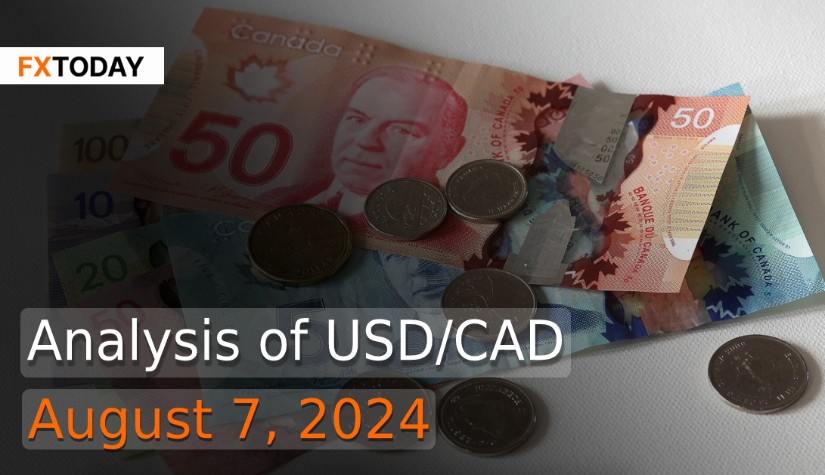BoC Hints at Further Rate Cuts Amid Economic Risks and Easing Inflation
The Bank of Canada (BoC) reduced its overnight rate to 4.5% last month, the second consecutive rate cut, aligning with analysts' expectations. This decision, driven by easing inflation, hints at another possible rate cut in September.
BoC Governor Tiff Macklem indicated that further rate cuts could occur if the inflation trend continues. He noted the growing economic risks due to excess supply from rapid population growth outpacing GDP growth. The BoC’s policy remains data-dependent, with potential inflationary pressures from high shelter costs and increasing wages. Macklem also mentioned the influence of the U.S. Federal Reserve’s actions on their rate decisions.
Citi analysts anticipate another 25 basis point rate cut at the BoC’s September 4 meeting, citing declining inflation and a weakening labor market. They forecast further cuts throughout the year, lowering the policy rate to 3.75% by year-end and 3.00% by the end of 2025. Market reactions suggest a 50% chance of a rate cut in September, with CAD rates rallying. Despite dovish signals, the USDCAD pair remained below 1.38, and Citi maintains its year-end forecast for USDCAD at 1.35.
The BoC revised its 2024 GDP growth forecast down to 1.2% from 1.5% and its 2025 forecast to 2.1% from 2.2%. It maintained its 2024 inflation forecast at 2.6% but raised the 2025 forecast to 2.4% from 2.2%. The estimated neutral nominal interest rate remains between 2.25% and 3.25%.
In July, Canadian manufacturing activity hit its weakest level of the year, with the PMI falling to 47.8, indicating contraction for the 15th consecutive month. High inflation, geopolitical tensions, and shipping challenges contributed to the downturn.
Canadian factory sales likely fell 2.6% in June due to declines in the chemical product and transportation equipment subsectors. Retail sales dropped 0.8% in May, driven by reduced spending amid persistent food inflation and high interest rates.
The services sector also saw reduced activity in July, with the PMI indicating contraction. Home sales in the Greater Toronto Area fell 1.7% in July, following a rise in June, while average home prices slightly increased.
At the same time, a parliamentary budget officer's analysis revealed that the Canadian federal government's target for capital gains tax revenue will fall short by 10%. This tax is intended to fund a significant portion of the government's housing plan.
On Tuesday, the dollar regained strength against most major currencies. The markets calmed after recent volatility. Traders anticipate 110 basis points of rate cuts from the Federal Reserve this year, with a 70% chance of a 50 basis point cut in September, down from 85% on Monday, according to the CME FedWatch tool.
U.S. central bank policymakers clarified that the weaker-than-expected July job data does not indicate a recession but highlighted the need for rate cuts to prevent economic decline. U.S. services sector activity bounced back in July with increased new orders and employment, easing recession fears despite a rise in the unemployment rate.
U.S. household debt increased by $109 billion in the second quarter to $17.80 trillion, but delinquency rates remained stable at 3.2%, suggesting borrowers are managing well enough to support the economy. Delinquency rates for credit cards and auto loans rose slightly, but mortgage delinquency rates remained historically low.
The recent financial market turmoil may lead to lower mortgage rates, benefiting homebuyers and those looking to refinance. Mortgage rates, influenced by U.S. government securities yields, are expected to continue declining from last week's six-month lows of around 6.70% for a 30-year fixed-rate mortgage.
On the other hand, the Fed’s July Senior Loan Officer Opinion Survey indicated that major banks eased lending standards for commercial and industrial loans in the second quarter, but consumer lending standards tightened for credit cards and other loans. Therefore, it is anticipated that the Canadian dollar may fluctuate widely during this period and could weaken further due to the comparatively stronger U.S. economy and the disparity in returns between the two countries.
Data for Technical Analysis (30Min) CFD USD/CAD
Resistance : 1.3781, 1.3784, 1.3788
Support : 1.3773, 1.3770, 1.3766
30Min Outlook
Source: TradingView
Buy/Long 1 If the support at the price range 1.3763 - 1.3773 is touched, but the support at 1.3773 cannot be broken, the TP may be set around 1.3781 and the SL around 1.3758, or up to the risk appetite.
Buy/Long 2 If the resistance can be broken at the price range of 1.3781 - 1.3791, TP may be set around 1.3799 and SL around 1.3768, or up to the risk appetite.
Sell/Short 1 If the resistance at the price range 1.3781 - 1.3791 is touched, but the resistance 1.3781 cannot be broken, the TP may be set around 1.3770 and the SL around 1.3796, or up to the risk appetite.
Sell/Short 2 If the support can be broken at the price range of 1.3763 - 1.3773, TP may be set around 1.3757 and SL around 1.3786, or up to the risk appetite.
Pivot Points Aug 7, 2024 02:44AM GMT
|
Name
|
S3
|
S2
|
S1
|
Pivot Points
|
R1
|
R2
|
R3
|
|---|---|---|---|---|---|---|---|
| Classic | 1.3759 | 1.3766 | 1.377 | 1.3777 | 1.3781 | 1.3788 | 1.3792 |
| Fibonacci | 1.3766 | 1.377 | 1.3773 | 1.3777 | 1.3781 | 1.3784 | 1.3788 |
| Camarilla | 1.3772 | 1.3773 | 1.3774 | 1.3777 | 1.3777 | 1.3778 | 1.3779 |
| Woodie's | 1.3759 | 1.3766 | 1.377 | 1.3777 | 1.3781 | 1.3788 | 1.3792 |
| DeMark's | - | - | 1.3769 | 1.3777 | 1.378 | - | - |
Sources: Investing 1, Investing 2
















